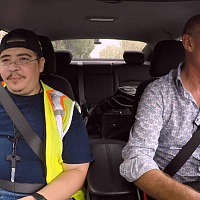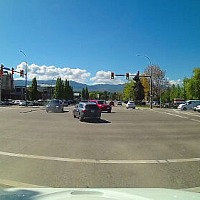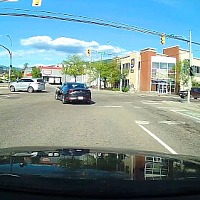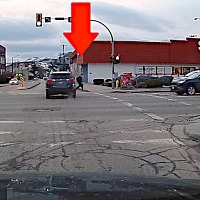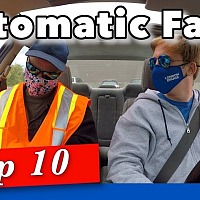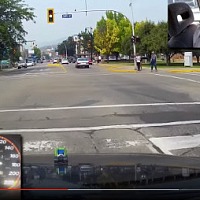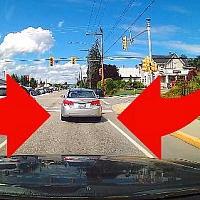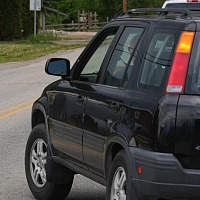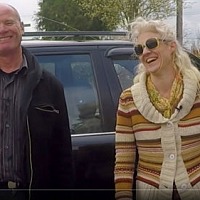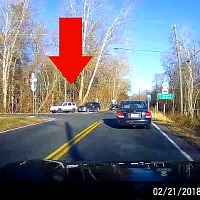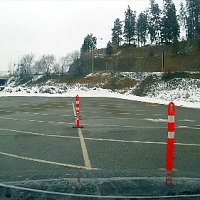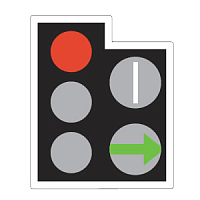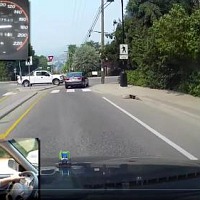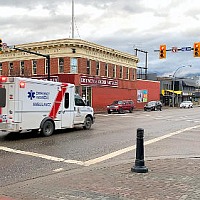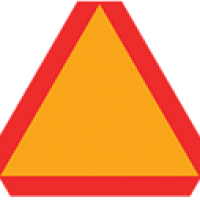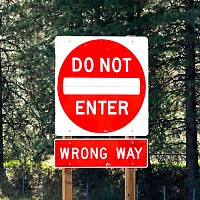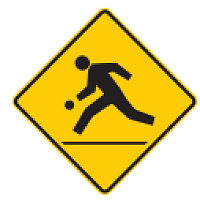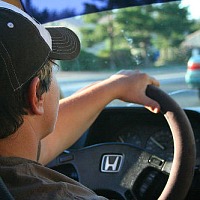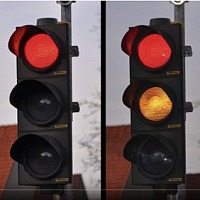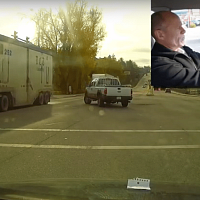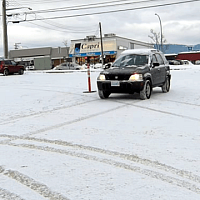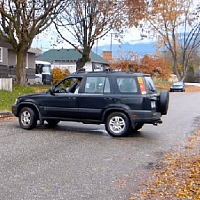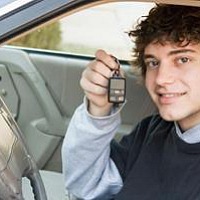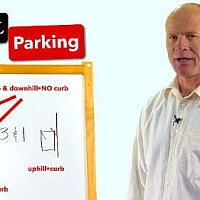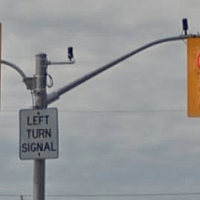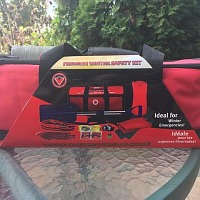8 more tips to pass your driver's test with any class of licence, anywhere in the world.
https://www.youtube.com/embed/dC1iJ3MzooI
8 More Tips & Techniques to Pass Your Road Test | Road Test Smart
Closed Caption
Introduction
Hi there smart drivers, Rick with Smart Drive Test.
Eight more tips for passing your road test:
1) space management;
2) speed management;
3) communication;
and 4) observation;
are the four fundamental components of an any road test, regardless of class of license anywhere in the world.
Those are the four fundamental components that you have to demonstrate to be successful on a road test - speed management, space management, observation and communication.
I am going to go into more detail a little bit later here in the video.
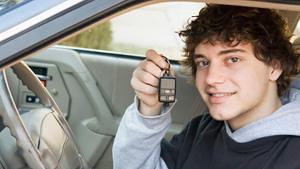
LEARN THE SECRETS THAT DRIVING SCHOOLS DON'T TELL YOU!
• FEAR :: Know that you WON'T have to face friends & family and tell them you didn't pass;
• SELF-CONFIDENCE :: Get the exact skills from a licensed driving instructor that will guarantee your success;
• CONFUSION :: Cut through the conflicting driving procedures information;
• QUALIFIED :: Smart Drive Test has helped 1000s pass their driver's test...and we can help you!
As well, we're going to talk about new technology on cars, particularly backup cameras.
No you cannot use the backup camera for the purposes of a road test.
And I will give you more information about that.
Practicing practice, practice, practice!
The more practice you can get driving, the higher chance of success you're going to have on your road test.
We talked a little bit about driving examiner's and what to expect on your road test.
And finally we're going to talk about doing a mock road test.
Hire a local driving school before you go down for your road test and preferably do it seven to ten days before your driver's test.
So stick around, we'll be right back with that information.
[INTRODUCTION & MUSIC]
Hi there smart drivers, Rick with Smart Drive Test - eight more tips to pass your road test.
Tip #1 - Space Management
Space management...
number one.
Don't get near anything, don't hit anything and stay away from other road users on the roadway.
And I'll put a card up here for you in the corner for pedestrians crossing the roadway when you're turning.
You have to have at least one lane of traffic between you and the pedestrians.
So stay away from other pedestrians and vulnerable road users: bicycles.
This is the reason that we shoulder check is so that you can check your blind spots around the vehicle and ensure that you're not near pedestrians, bicycles, or scooters.
So space management - don't get near anything, don't strike anything.
If you strike a any object--a fixed object or you strike another road user--unfortunately you're not going to be successful on your driver's test..
Space management is number one.
Tip #2 - Speed Management
The second criteria for a road test:
2) speed management.
You have to be able to do the posted speed limit or the traffic flow or the capability of the vehicle, whichever is less.
So posted speed limit - you have to maintain a constant flow.
If you look at my video here on a mock road test - on how to do a road test - you're going to see in the camera--I'll put a card up for you in the corner here--you're going to see in the camera that i rarely hit the posted speed limit in residential areas.
It's only when I get out onto the bigger road that I actually get up to the speed limit.
If the flow of traffic is less than the posted speed limits than that's what you do.
If you're driving a higher class vehicle--a bigger vehicle, a RV, you're pulling a trailer, you're doing a heavy trailer endorsement, tractor trailer or bus, and you're going up a hill you can only do what the capability of the vehicle.
So that's the last speed requirement for speed management in terms of a road test.
Tip #3 - Communication
Number 3: communication.
You have to communicate with other road users what you are doing.
And that is done through your lights, your signals, your horn, appropriate hand signals - don't tell other road users they're number one, especially on a driver's test.
You won't be successful!
Get eye contact with other road users--pedestrians, riders, and cyclists--if you're unsure what they are doing or if they're going at an intersection.
And finally the position of your vehicle, where your vehicle is on the roadway communicates to other road users what you're doing on the roadway.
If a vehicle is in the left-turning lane, most likely that vehicle is going to turn left.
Tip #4 - Observation
So communication - that is fundamental for passing a road test.
Number four, observation.
You have to observe when you're doing your slow speed maneuvers, when you're reversing the vehicle - you have to do a 360° degree scan.
That means you look forward, you look to both sides of the vehicle, and you look out the back and check your mirrors.
A 360° degree scan and as well observe - when you're driving down the roadway you need to scan intersections, laneways, railway crossing - any place that there's going to be an intersection between you and other road users.
And other vehicles - you have to observe the whole time that you're driving for the purposes of your road test.
It indicates to the examiner that you are looking, you are looking at other road users, you're interpreting traffic patterns, and you're predicting what other vehicles on the roadway are going to do in relation to those traffic patterns.
Because for the most part, traffic is predictable and you can predict what other road users are doing on the roadway.
Tip #5 - Practice, Practice, Practice
Driving is NOT a spectactor sport!
Now you'll hear me say this again and again and again when I do this...
when i do the videos here: number 5...I think we're up to number 5? Number 5 is practice.
If you don't practice for the purposes of your driver's test, you're not going to be successful.
Practice slow speed maneuvers and I'm going to put a card up here for you in the corner on fundamentals of driving.
Learning the fundamentals of driving: the steering wheel, the brake, and the throttle, and the clutch if you're driving a manual transmission are the primary controls of the vehicle.
It's like doing music, you have to practice scales to get good at it.
The same thing with driving, you have to practice the fundamentals.
It's the same thing with martial arts, you've got to do wall punches, you got to do punches, kicks, you got to shadow box - you have to know the fundamentals and it's no different with driving.
You have to practice the fundamentals.
If you don't practice the fundamentals, you're not going be good at driving.
And it's going to be unlikely that you're going to be successful on a road test.
Slow-Speed Manoeuvres
And again practice the slow speed manoeuvres, this will translate into all of your overall driving and make your driving better overall.
Tip #6 - Technology - Won't Always Keep you Out of the Muck!
Number six - technology.
Backup cameras - all these new vehicles have beepers and backup cameras.
And for the purposes of a road test you cannot rely on technology for the purposes of passing your road test.
Unfortunately I've had smart drivers who've left comments here that they failed because they used the backup camera while they were backing into the parking space and doing the reverse bay parking.
You have to turn your body and you have to look out the back window of the vehicle for the purposes of a road test.
And the reason that they do that is because the examiner is thinking you're not always going to be driving the same vehicle that you're in.
You're going to be moving around to different vehicles and you're going to have to know how to do it regardless of the technology that's in that vehicle.
So you have to turn around when back up and look out the back window - look out the back window while you're reversing the vehicle for the purposes of the road test.
So know that.
That's a question that I've had quite a bit - about backup cameras.
Know that you can't use the backup cameras as your main line of sight when reversing.
Tip #7 - Driving Examiners Aren't All Grumpy!
Number seven - driving examiners.
Driving is not objective; there isn't a formula - it's subjective.
And when I get into a vehicle with somebody that I'm doing a road test with or I'm doing an evaluation with I can tell very quickly--within two or three minutes--whether that person can drive or not.
Driving examiners are no different.
As well, driving examiner's each have their little quirks.
I worked with many different driving examiner's and we had a driving examiner in Victoria, British Columbia here who solid white lines were his pet peeve.
If you crossed over a solid white line he was going to ding you for it.
Here in Vernon, BC where I now live and I now work we have a driving examiner's - if you're driving a larger class vehicle and you bang off the road markings-- the lane demarcations--you're going to lose points for that.
In other words, when you wander in the lane.
So every driving examiner has the little quirk.
I've had lots of smart drivers tell me that they were unsuccessful on the road test because their turns were too slow or some other aspects out their driving caused them to fail.
That's not particularly true.
We have a saying in martial arts: "One thing shows all!"
And what happens is, driving examiners are not going to pass you on your driving test if your fundamentals are not in place; if you have not done the work and practiced your slow speed maneuvers.
Because they know that you are not up to a certain standard be able to drive, but they're going to tell you that your turns were too slow or some other aspects of your driving.
Because they can't say, "Oh the person can't drive!"
Your driving is simply not up to a standards, and they have to be specific.
It has to look objective, so when they tell you that something happened--it was not a dangerous action because the dangerous action is something different--it's just that you're driving isn't up to a certain standard.
And it comes back to practicing your slow speeds maneuvers - you have to practice your slow speed maneuvers or you're not going to be successful on your road test.
And when examiner's tell you one thing that was wrong with your road test and that was the reason you failed, oftentimes that's not the only reason you failed.
You failed because you're driving was up not up to a standard.
So practice, practice, practice and know that each driving examiner expects a certain level of competency when it comes to driving.
Tip #8 - Do A Mock Road Test - It's $$ Well Invested!
Number eight - Mock Driver's Test
Seven to ten days before you go for your road test, if you haven't taken driving lessons, hire a local driving school and go out for a mock road test.
You are not going to learn from the videos on this channel how to drive! Driving is not a spectator sport - you have to get in the vehicle, regardless of class of license whether it's a motorcycle, a car, a a bus, or a truck and you have to get in the vehicle and you have to drive it.
If you don't get in the vehicle and practice and drive, you're not going to learn how to drive.
And you are not going to learn how to drive from these videos.
These videos will give you a great deal of information about what is expected of you for the purposes of passing a road test and for defensive driving and helping you to drive safely when you get your license, but it will not help you pass the road test if you don't practice.
You need to get in the vehicle and you need to practice.
The same thing is true for being a good baseball player, being good at sports, being good at dance, being good at music.
You have to do it! If you don't do it, you're not going to be successful.
So practice, practice, practice.
Get a mock road test seven to ten days before your road test and a driving instructor will be able to identify the gaps in your abilities.
Things that need to fix or strengthen before you go for your road test.
So make sure you do a mock road test before you go down for your driving exam.
Conclusion
Quick review of eight tips to pass your road test.
1) Observation;
2) communication;
3) speed;
and 4) space management.
Those are the four fundamentals of a road test regardless of class of license and regardless of where as a test is in the world.
Those four fundamentals are all the same.
Space management, don't get near other road users, don't get near fixed objects.
And unfortunately if you strike a fixed object on your road test, you're not going to be successful.
Speed management - the posted speed limit, traffic flow, or the capability of the vehicle whichever is less.
Communication - you have to communicate to other road users what you're doing by your lights, your signals, hand signals--appropriate hand signals-- and the position of the vehicle on the roadway will indicate to other road users what you're doing.
You have to observe - scanning intersections or any points of conflict along the roadway.
Scanning railway crossings - as well, shoulder checking to look for other road users in your blind spots, particularly vulnerable road users which include motorcycles, bicycles, pedestrians, riders on motorcycles.
Those are all vulnerable road users.
So shoulder checking.
As well, doing 360° degrees scans.
Anytime you put the vehicle in reverse, you're looking out the back window.
Checking your mirrors to both sides and looking out the front of the vehicle - observation.
That is the huge component of any road test.
Practice, practice, practice, practice slow speed maneuvers because this will improve your overall driving and you will learn to drive faster if you do your slow speed maneuvers.
And practice, practice, practice.
You cannot rely on the technology in the vehicle to back up.
You cannot use backup beepers or backup cameras.
You simply can't do that for the purposes of the road test because what they're thinking is that you're going to move around in different vehicles and drive different vehicles.
And if that technology isn't in another vehicle, you won't be able to observe properly and drive that vehicle safely.
So that's what they're thinking in terms of not relying on technology for the purposes of your road test.
Driving examiners - all driving examiners have little quirks, but if you're driving is up to a certain level you're going to be successful on your road test.
As well, driving examiners - if you are unsuccessful on your road test, will tell you one thing that you did wrong.
Oftentimes, it's not just that one thing!
Oftentimes your entire driving ability was not up to a certain level and if it's not up to a certain level the driving examiner is going to tell you one thing and that was the reason you failed, but oftentimes that's not it at all.
So I come back again to practicing the slow speed maneuvers and getting your driving up to a certain level.
It's the same thing as music or martial arts or any other activity - you have to do it to get better at it.
You have to practice.
And finally, seven to ten days before your road test go down and do a mock road test with the local driving school.
The driving instructor will identify thegaps in your knowledge, skills and abilities and that way you'll have a few days to be able to work on that and improve those skills and abilities that you need the purposes of a road test.
Question for my smart drivers:
Do you have any tips for new drivers going down for a driver's test?
Leave a comment down in the comment section there, all of that helps out the new drivers working towards getting their license.
If you like what you see here share, subscribe, leave a comment down in the comment section.
As well, hit that thumbs up button.
Check out all the videos here on the channel if you're working towards the license or starting a career as a truck or bus driver - lots of great information here.
As well, head over to the Smart Drive Test website.
Awesome information over there and tremendous online courses that you can purchase.
And in May 2017, we're bringing out "Air brakes explained simply." It updates the 40 year old air brake manuals that are currently in circulation in North America.
As well, there's a hundred air brake questions--multiple choice questions--that you will be asked on a CDL (Commercial Driver's License) theory exam.
So look for that in May 2017.
I'm Rick with Smart Drive Test.
Thanks very much for watching.
Good luck on your road test.
And remember, pick the best answer not necessarily the right answer.
Have a great day.
Bye now.
Blooper
number...
what number are we on? number six, seven, eight - we're on number eight - no we're not on number eight, we're on number six.
[LAUGHING] Yes, okay number nine, number seven




